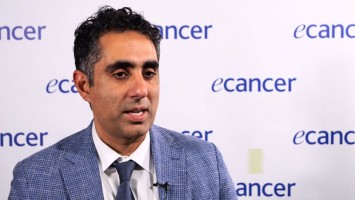AACR 2015
DNA stool test recommended as screening tool for colon cancer
Dr David Ahlquist - Mayo Clinic, Rochester, USA
Colon cancer, just in terms of context, continues to be the second most common cancer killer in North America and the third most in Europe, despite screening. One of the problems with current tools is patients don’t often use them; in the United States only about half of patients are regularly screened. Those that take different tools, the tools themselves don’t work as well as they could. So there’s an opportunity, in fact there’s an imperative, to innovate with a test that delivers three things: one, high sensitivity for early stage cancer and the advanced pre-cancers that are going to go on to cancer; second, a test that’s user-friendly, that patients are willing to use that doesn’t interrupt with their daily activities, and thirdly, it would be easily accessible, a test that goes by the mail is an easily accessible test. So stool DNA testing actually is quite revolutionary, it meets all of those three points.
So it meets those points, can you contrast it to the previous and existing techniques, the bar from which you would be raising?
I mentioned that it sets a new high bar for non-invasive tests. I’ll start by saying that for colon cancer, for curable stage colon cancer, that is stage 1 and 2, the sensitivity in a multi-centre study was 94%. It has the same sensitivity as has been reported for colonoscopy but it does so non-invasively; no other non-invasive test does that. FIT, across studies, averages about a sensitivity for curable stage cancer of about 70%. For the types of polyps that lead to cancer, for adenomas it detects about 25%; for the other type of polyp that’s premalignant it only detects about 5%. Those are called sessile serrated polyps.
This is actually tumour DNA that you’re testing for?
Yes. The stool DNA test sets a new high bar because it’s much more sensitive than FIT, again, 94% for curable stage cancer. But for the polyps at highest risk to become cancer it also detects those, polyps over 2cm, at about close to 70%, 65-70%.
What sort of false negative rate do you get? And false positive?
The flip side of sensitivity is called specificity and you want high specificity as well. That means few false positives. If the test says it’s negative it’s really negative, you don’t want to miss lesions. If it says it’s positive you want it to be a tumour or a polyp, not something that is other. So false positives, if you look at how a test like this performs at one point in time, the false positive rate is about 10%, FIT it’s about 5%. However, FIT is done every one year to two years, this test would be done every three years. So if one divides the frequency of false positives, the frequency or the false positive rate per year is about 3% per year, which is about the same as FIT. So programmatically they have the same false positive rate.
How do you counsel this DNA test being introduced and used, then? What’s your advice?
It’s very easy to be used from a patient standpoint, they can have the test at home and there is no preparation, no diet or medication restriction, there’s no bowel prep. It’s very simple to use, you basically defecate into a bucket and send it back to the lab. So simple from a patient standpoint. The barriers for its widespread use are more regulatory. This test, in the United States, was approved by FDA in late 2014 and it was at the same time approved for funding for coverage by our Medicare, our government insurance. So those two big barriers have been resolved. The private insurers in this country need to approve it as well, and that’s being done as we speak. For doctors and patients, there’s a need to educate them and I think they need to understand how this test performs and one would need to share those performance metrics. When one looks at that it sells itself. From a patient standpoint they have no problem taking a high quality test that involves no bowel prep and they don’t have to miss work; that’s a pretty easy education thing. But what has to happen at the patient-provider interface is they have to have an objective conversation about all of the screening options. This becomes a legitimate part of options now, in this day, it’s a legitimate option. So physicians need to put that in context – it has these performance characteristics, it’s non-invasive. And already there are a lot of patients that have chosen to use this test when they hear that story. But it will be an evolution, it’s just starting, it’s just out of the blocks now and there’s an education process that’s required.








